-
Pushpanjali Eye Care Hospital, Golpark, Kolkata-700029
Pushpanjali Eye Care Hospital, Golpark, Kolkata-700029
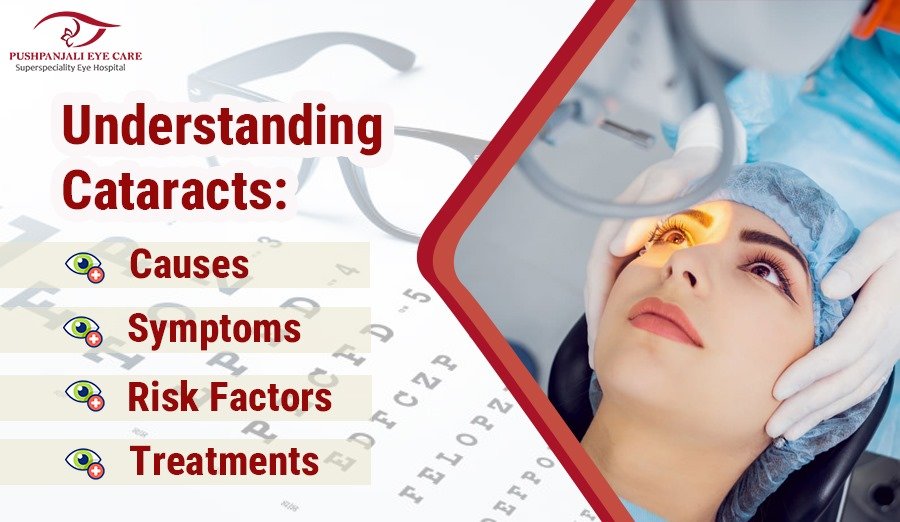
By PushpanjaliEyeCare
09.04.2024
Dear Reader!
Welcome to the blog page of Pushpanjali Eye Care, your trusted destination for top-notch cataract treatment in Kolkata. We’re delighted to have you here as we embark on a journey to explore everything you need to know about cataracts, their causes, symptoms, risk factors, and the latest treatment options available.
At Pushpanjali Eye Care, we are committed to providing exceptional cataract care services to our patients, backed by a team of experienced ophthalmologists in Kolkata and state-of-the-art facilities. Whether you’re seeking information about cataracts or considering treatment options, you’re in the right place.
Join us as we delve into the world of cataracts, unraveling the mysteries surrounding this common eye condition, and empowering you with knowledge to make informed decisions about your eye health.
Let’s embark on this enlightening journey together, shall we?
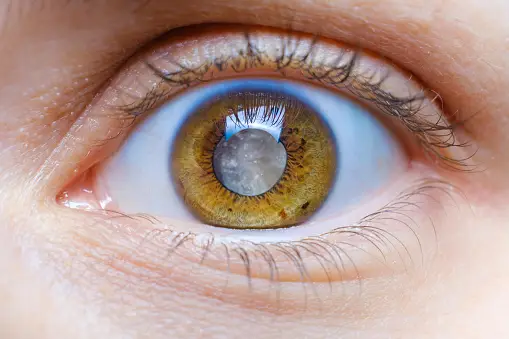
Cataracts, though common, are often misunderstood. In this comprehensive guide, we delve into the causes, symptoms, risk factors, and treatment options for cataracts to help you gain a better understanding of this prevalent eye condition.
So, let’s delve into what cataracts are.
Cataracts are a prevalent eye condition characterized by the clouding of the natural lens inside the eye, leading to impaired vision. The lens, which is normally clear, becomes cloudy over time, causing visual disturbances that can range from mild blurriness to complete loss of vision if left untreated.
Understanding cataracts is essential as they can have a profound impact on one’s quality of life. Imagine trying to navigate daily tasks, such as reading, driving, or even recognizing faces, with obscured vision. Cataracts can significantly hinder these activities and diminish overall independence and well-being.
As we delve deeper into the topic of cataracts, we’ll explore the various causes, symptoms, risk factors, and treatment options available. By understanding this condition comprehensively, individuals can take proactive steps to preserve their vision and maintain a high quality of life.
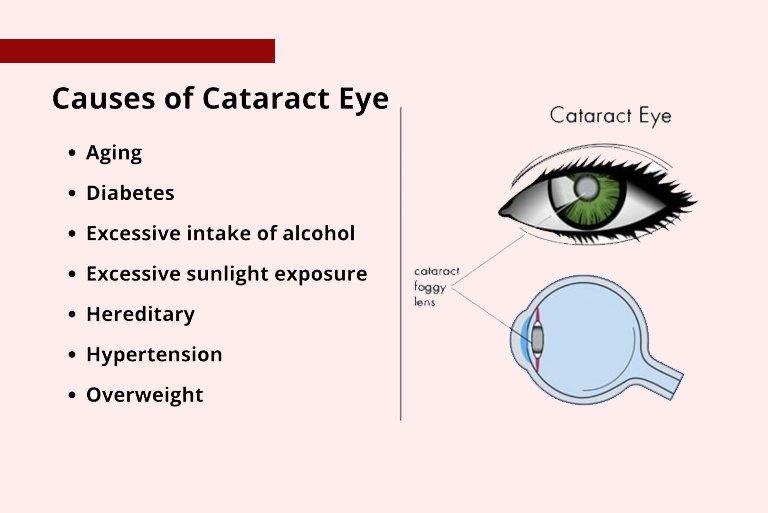
Cataracts can arise from a multitude of factors, with age-related changes, trauma, and genetic predisposition being among the primary contributors.
By understanding the diverse array of factors that can contribute to the development of cataracts, individuals can better recognize potential risk factors and take proactive measures to preserve their eye health. Whether it’s prioritizing regular eye exams, wearing protective eyewear during physical activities, or managing underlying health conditions, awareness and proactive care are essential in mitigating the impact of cataracts on vision and overall well-being.
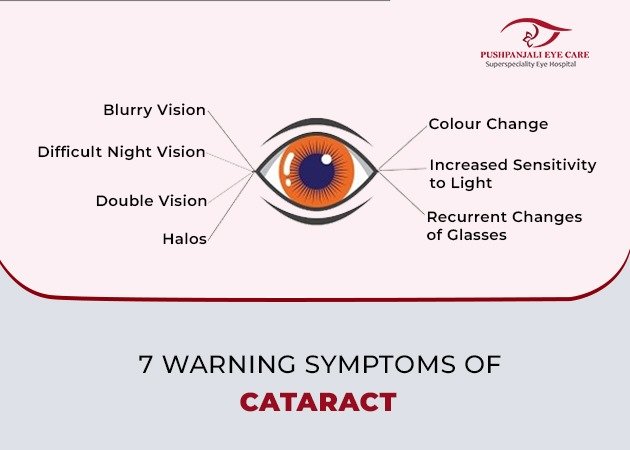
Recognizing the symptoms of cataracts is crucial for early detection and timely intervention to preserve vision. These symptoms can manifest gradually and vary in severity, affecting individuals differently. Here are some common symptoms of cataracts along with real-life examples to help readers understand them more easily:
By being aware of these symptoms and their potential impact on daily activities, individuals can seek prompt evaluation by an eye care professional for proper diagnosis and management of cataracts. Early intervention can help preserve vision and improve overall quality of life, allowing individuals to continue enjoying their favorite activities with clarity and confidence.

While cataracts can affect anyone, certain factors can increase the likelihood of their development. Understanding these risk factors is essential for proactive management and prevention. Here are some key risk factors for cataracts, along with explanations to help readers grasp their significance:
By recognizing these risk factors and taking appropriate precautions, individuals can mitigate their risk of developing cataracts and maintain optimal eye health as they age. Whether it’s wearing UV-protective sunglasses, managing underlying health conditions like diabetes, or scheduling regular eye exams, proactive measures can make a significant difference in preserving vision and enhancing overall well-being.

Early detection of cataracts is paramount for effective management and preservation of vision. Diagnosis typically involves a comprehensive eye examination conducted by an eye care professional, such as an optometrist or ophthalmologist. This examination includes several tests and assessments aimed at evaluating the overall health of the eyes and identifying any abnormalities in the lens. Here’s a closer look at the diagnostic process for cataracts, along with recent advancements and research findings:
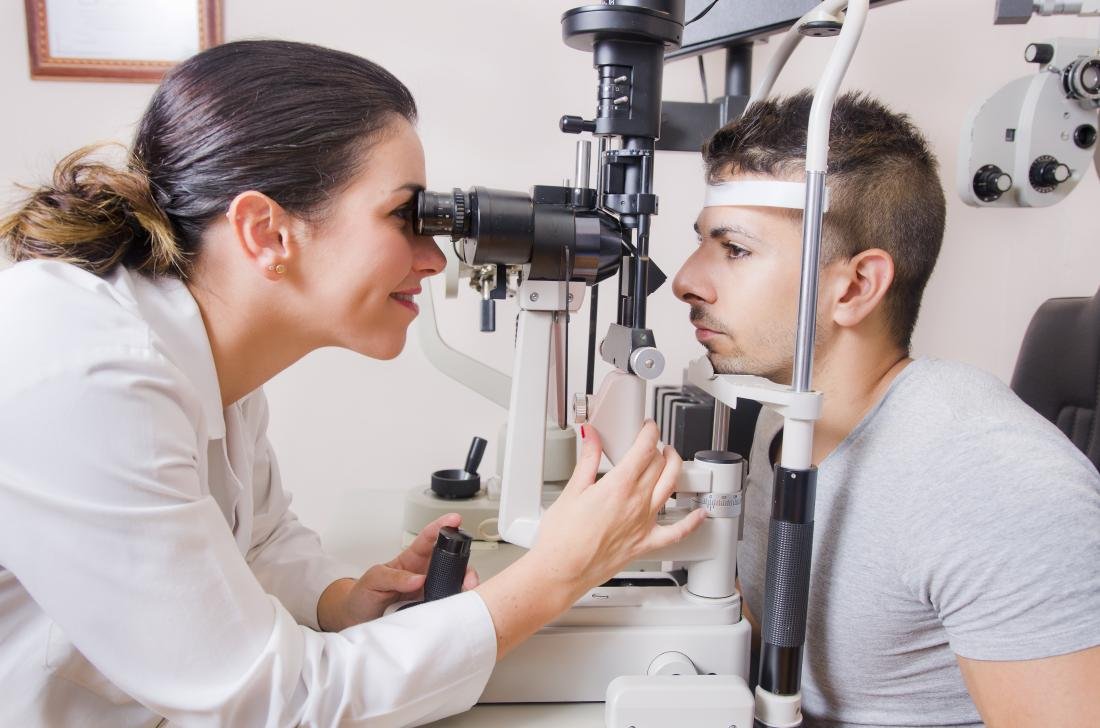
Recent research in the field of cataract diagnosis has focused on the development of innovative diagnostic tools and techniques to improve accuracy and efficiency. For example, researchers are exploring the use of artificial intelligence (AI) algorithms to analyze imaging data and assist in the early detection of cataracts. Additionally, studies have investigated novel biomarkers and genetic markers associated with cataract development, offering potential insights into personalized diagnosis and treatment approaches.
By staying abreast of these advancements and incorporating them into clinical practice, eye care professionals can enhance their ability to diagnose cataracts accurately and efficiently, ultimately improving patient outcomes and quality of life. Early diagnosis remains the cornerstone of effective cataract management, highlighting the importance of regular eye examinations for individuals at risk of developing cataracts.
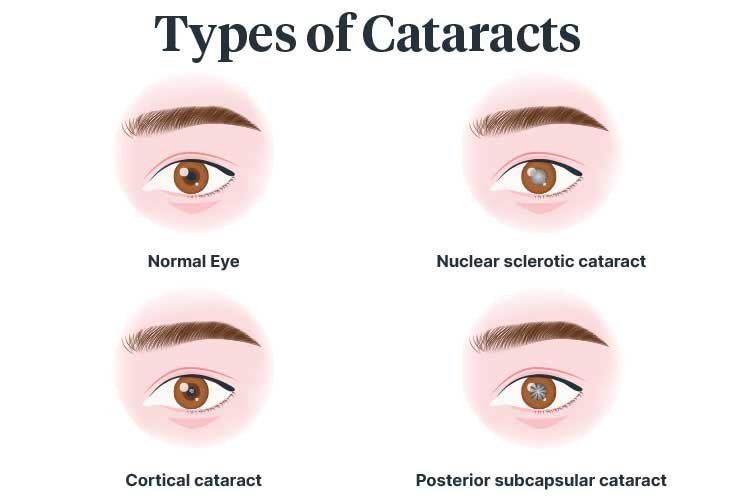
Cataracts can manifest in various forms, each characterized by unique characteristics and effects on vision. Understanding the different types of cataracts is essential for accurate diagnosis and tailored treatment strategies. Here’s a closer look at the three primary types of cataracts, along with real-life examples to illustrate their distinct features:
Nuclear cataracts, also known as age-related cataracts, affect the central portion (nucleus) of the lens and are typically associated with aging. As the cataract progresses, the central portion of the lens becomes increasingly opaque, leading to changes in vision. Individuals with nuclear cataracts often experience a gradual decline in near vision, making tasks such as reading or using electronic devices challenging. Imagine an older adult who struggles to read fine print or thread a needle due to the clouding of the central portion of their lens—a hallmark characteristic of nuclear cataracts.
Cortical cataracts form in the outer layer (cortex) of the lens and are characterized by the presence of wedge-shaped opacities that extend from the periphery towards the center of the lens. These opacities can disrupt the transmission of light through the lens, resulting in visual disturbances such as glare, halos, and reduced contrast sensitivity. Individuals with cortical cataracts may notice difficulty driving at night or seeing clearly in bright sunlight due to the scattered light caused by the cortical opacities. Picture a person driving at dusk who experiences distracting glare from oncoming headlights, a common scenario for those with cortical cataracts.
Subcapsular cataracts develop on the back surface of the lens capsule, near the lens capsule’s outer edge. These cataracts tend to progress rapidly and can have a significant impact on visual acuity, particularly in individuals with pre-existing conditions such as diabetes or steroid use. Subcapsular cataracts are often associated with increased sensitivity to light and glare, as well as difficulty focusing on nearby objects. Consider the case of a middle-aged individual with diabetes who experiences worsening vision and sensitivity to light due to the development of subcapsular cataracts—a challenging complication of their underlying health condition.
By recognizing the distinct characteristics and effects of each type of cataract, eye care professionals can tailor treatment approaches to address the specific needs of individual patients. Whether it’s monitoring the progression of nuclear cataracts in an elderly patient or managing the visual symptoms associated with cortical or subcapsular cataracts, personalized care is essential in optimizing outcomes and preserving vision.
Although certain risk factors for cataracts, such as aging and genetics, are beyond our control, there are proactive steps individuals can take to lower their risk of developing this common eye condition. By adopting healthy habits and minimizing exposure to environmental factors that contribute to cataract formation, individuals can safeguard their eye health and potentially delay the onset of cataracts. Here are some preventive measures, along with real-life examples to illustrate their implementation:

Prolonged exposure to ultraviolet (UV) radiation from the sun is a known risk factor for cataracts. To reduce your risk, wear sunglasses that offer UV protection whenever you’re outdoors, especially during peak sunlight hours. Additionally, consider wearing wide-brimmed hats or seeking shade when spending extended periods in direct sunlight. For instance, imagine a beachgoer enjoying a day at the shore while wearing UV-blocking sunglasses and a floppy hat to shield their eyes from harmful UV rays—a simple yet effective way to protect against cataract formation.

Adopting a healthy lifestyle can significantly reduce your risk of developing cataracts. Eating a balanced diet rich in fruits, vegetables, and antioxidants can provide essential nutrients that support eye health and protect against oxidative damage. Regular exercise and maintaining a healthy weight can also promote overall well-being and reduce the risk of chronic conditions such as diabetes, which is associated with an increased risk of cataracts. Consider the example of an individual who incorporates colorful fruits and vegetables into their meals, engages in regular physical activity, and maintains a healthy weight as part of their proactive approach to preventing cataracts.

Smoking and excessive alcohol consumption have been linked to an increased risk of cataracts. Quitting smoking and limiting alcohol intake can help reduce oxidative stress and inflammation in the body, thereby lowering the likelihood of cataract development. Imagine a former smoker who decides to quit smoking and limit alcohol consumption after learning about the detrimental effects of these habits on eye health. Over time, they experience improvements in their overall health and a reduced risk of developing cataracts—a positive outcome of their lifestyle changes.
By incorporating these preventive measures into your daily routine, you can take proactive steps to protect your eyes and reduce your risk of developing cataracts. Remember that prevention is key, and investing in your eye health today can help preserve your vision for years to come.

When it comes to managing cataracts, several treatment options for cataracts are available to address varying degrees of visual impairment and improve overall quality of life. At Pushpanjali Eye Care Hospital, our team of experienced ophthalmologists offers comprehensive care and personalized treatment plans to meet the unique needs of each patient. Here’s an overview of the treatment options for cataracts, along with encouragement for readers to consider booking an appointment with our renowned ophthalmologists for expert care in Kolkata:
In the early stages of cataracts, when vision is only mildly affected, prescription glasses or contact lenses may help improve visual clarity and alleviate symptoms such as blurred vision or difficulty reading. These corrective lenses can compensate for the refractive errors caused by the clouding of the lens, allowing patients to maintain functional vision and continue performing daily activities with ease. If you’re experiencing vision changes and suspect cataracts may be the cause, schedule an appointment with one of our skilled ophthalmologists at Pushpanjali Eye Care Hospital for a comprehensive eye examination and personalized vision correction options.
In more advanced cases of cataracts, when vision impairment significantly interferes with daily activities and quality of life, cataract surgery may be recommended. During this minimally invasive procedure, the clouded lens is removed and replaced with an artificial intraocular lens (IOL) to restore clear vision. Cataract surgery is a safe and highly effective treatment option, with millions of successful procedures performed worldwide each year. Our experienced ophthalmic surgeons at Pushpanjali Eye Care Hospital utilize state-of-the-art techniques and technology to ensure optimal outcomes and rapid recovery for our patients. If you’re considering cataract surgery or would like to learn more about your treatment options, we invite you to schedule a consultation with our expert team.
At Pushpanjali Eye Care Hospital, we understand the importance of clear vision and the impact that cataracts can have on your daily life. Our compassionate and dedicated team is committed to providing exceptional care and personalized treatment plans to help you achieve optimal eye health and vision clarity. Don’t let cataracts hold you back—take the first step towards clearer vision and improved quality of life by booking an appointment with our experienced ophthalmologists today.
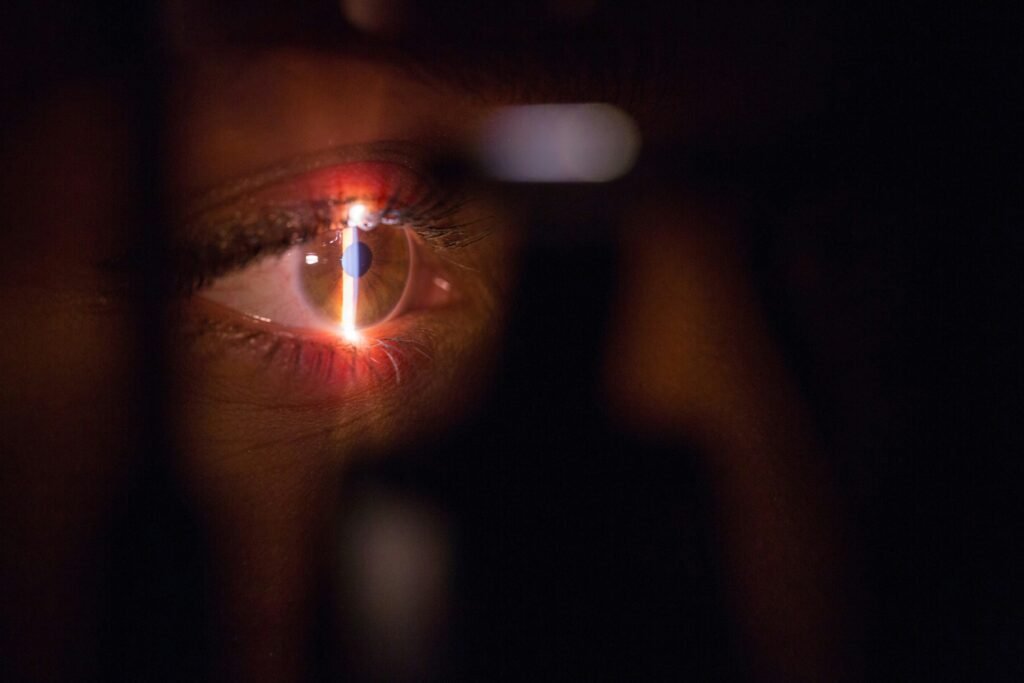
Cataract surgery is a widely performed and highly effective procedure aimed at restoring clear vision in individuals affected by cataracts. This surgical intervention involves the removal of the clouded natural lens of the eye and its replacement with an artificial intraocular lens (IOL). Here’s a detailed explanation of the cataract surgery process:
Before undergoing cataract surgery, patients undergo a comprehensive preoperative evaluation conducted by an ophthalmologist. This evaluation includes a thorough assessment of the patient’s overall eye health, visual acuity, and the severity of the cataract. Additionally, measurements of the eye’s dimensions are taken to determine the appropriate power and type of intraocular lens (IOL) to be implanted during the surgery.
Cataract surgery is typically performed under local anesthesia, which numbs the eye and surrounding tissues while allowing the patient to remain awake and comfortable throughout the procedure. In some cases, intravenous sedation may also be administered to help the patient relax during the surgery.
To access the clouded lens, the surgeon creates a small incision in the cornea, the clear, dome-shaped surface covering the front of the eye. This incision may be made manually using a surgical blade or with the assistance of advanced femtosecond laser technology, depending on the surgeon’s preference and the specific characteristics of the patient’s eye.
Once the incision is made, the surgeon uses specialized instruments, such as phacoemulsification or femtosecond laser, to break up and remove the clouded lens from the eye. This process involves emulsifying the lens material using ultrasonic energy or laser energy and gently suctioning it out of the eye, leaving behind the capsular bag, a thin, elastic membrane that holds the artificial lens.
With the natural lens removed, the surgeon inserts a new artificial intraocular lens (IOL) into the capsular bag to replace the cloudy lens. The IOL is selected based on the patient’s unique visual needs and may be monofocal, multifocal, or toric, depending on factors such as the degree of nearsightedness, farsightedness, or astigmatism.
Once the IOL is securely implanted, the surgeon carefully closes the incision using tiny sutures or self-sealing techniques. In some cases, no sutures are required, and the incision seals naturally.
Following cataract surgery, patients are monitored in the recovery area for a brief period before being discharged home. They are provided with detailed postoperative instructions, including the use of prescribed eye drops to promote healing and prevent infection. Patients are typically advised to avoid strenuous activities, rubbing or touching the eye, and swimming or exposing the eye to water for a specified period following surgery.
Patients return to the ophthalmologist for scheduled follow-up visits to assess their progress and monitor for any complications. These visits allow the surgeon to ensure that the eye is healing properly and that visual acuity is improving as expected. Adjustments to medications or additional treatments may be recommended based on the individual patient’s response to surgery.
Cataract surgery is a safe and effective treatment option for restoring clear vision and improving the quality of life in individuals affected by cataracts. With advancements in surgical techniques and technology, including the use of femtosecond laser technology and premium intraocular lenses, patients can achieve excellent visual outcomes and enjoy a rapid recovery with minimal discomfort. If you’re considering cataract surgery or would like to learn more about your treatment options, schedule a consultation with an experienced ophthalmologist at Pushpanjali Eye Care Hospital today.

After undergoing cataract surgery, proper post-operative care plays a vital role in promoting optimal healing and achieving favorable visual outcomes. Here’s a comprehensive guide to post-surgery care following cataract surgery:
By following these post-surgery care guidelines and maintaining regular communication with their healthcare provider, patients can facilitate a smooth recovery process and achieve optimal visual outcomes following cataract surgery. If you have recently undergone cataract surgery or are preparing for the procedure, consult with your ophthalmologist for personalized post-operative care instructions tailored to your specific needs and circumstances.

Cataract surgery is considered one of the safest and most effective surgical procedures, with high success rates and minimal risk of complications. However, as with any surgical intervention, there are potential risks associated with cataract surgery that patients should be aware of. While these complications are relatively rare, it’s essential to understand them to make informed decisions and take appropriate precautions. Here are some of the potential complications of cataract surgery:
While these complications are relatively uncommon, it’s important for patients to be aware of the potential risks associated with cataract surgery and to discuss any concerns with their ophthalmologist before undergoing the procedure. By choosing an experienced and skilled surgeon, adhering to preoperative and postoperative instructions, and attending all scheduled follow-up appointments, patients can minimize their risk of complications and achieve successful outcomes following cataract surgery.
While conventional treatments such as prescription glasses, contact lenses, and cataract surgery are the primary methods for managing cataracts, certain lifestyle changes and dietary supplements may offer additional support in slowing the progression of this common eye condition. Incorporating these alternative treatments into your routine may help promote eye health and preserve vision. Here are some alternative treatments for cataracts:
While these alternative treatments may help support overall eye health and slow the progression of cataracts, it’s important to remember that they are not substitutes for conventional medical treatments. If you have been diagnosed with cataracts or are experiencing changes in your vision, consult with your eye care provider to discuss the most appropriate treatment options for your individual needs. By taking a proactive approach to eye health and incorporating lifestyle changes and supplements as recommended, you can help preserve your vision and maintain optimal eye health for years to come.
Adjusting to life with cataracts can present challenges as the condition progresses, but with proper support and adaptation, individuals can maintain a fulfilling lifestyle. Here’s how real-life examples illustrate the experience of living with cataracts and the importance of seeking assistance and support:
By making adjustments to daily activities, seeking support from loved ones and community resources, exploring treatment options, and embracing assistive technology, individuals living with cataracts can maintain independence, quality of life, and overall well-being. It’s essential to approach cataracts with a proactive mindset and utilize available resources to address challenges and adapt to changes in vision effectively.
The future of cataract treatment holds promise, thanks to ongoing advancements in medical technology and research. These innovations aim to further improve outcomes for patients, enhance treatment options, and develop more effective strategies for managing and preventing cataracts. Here’s a glimpse into the future outlook for cataract treatment:
Rapid advancements in surgical techniques, instrumentation, and intraocular lens (IOL) technology are revolutionizing cataract surgery and improving visual outcomes for patients. Innovative technologies such as femtosecond laser-assisted cataract surgery (FLACS), which offers greater precision and customization during lens removal, are becoming increasingly accessible. Additionally, advancements in IOL design, including multifocal and extended depth of focus (EDOF) lenses, aim to provide patients with enhanced visual acuity at various distances, reducing the need for corrective eyewear post-surgery.
The future of cataract treatment is moving towards less invasive and more patient-friendly procedures. Minimally invasive techniques, such as micro-incision cataract surgery (MICS) and topical anesthesia, offer shorter recovery times, reduced postoperative discomfort, and improved safety profiles compared to traditional cataract surgery. These advancements enable patients to undergo surgery with confidence and minimal disruption to their daily lives.
Research into pharmacological interventions for cataracts aims to develop targeted therapies that can slow or prevent cataract formation. Promising compounds, such as antioxidants, anti-inflammatory agents, and lens protein inhibitors, are being investigated for their potential to delay the progression of cataracts and preserve vision. These pharmacotherapeutic approaches may offer additional options for patients who are not candidates for surgery or wish to delay the need for invasive treatment.
The future of cataract treatment may involve personalized approaches tailored to individual patient characteristics and preferences. Advances in genetic testing and biomarker identification may enable clinicians to identify individuals at higher risk of developing cataracts and tailor treatment strategies accordingly. Personalized medicine approaches may also optimize surgical planning and postoperative care, leading to improved outcomes and patient satisfaction.
Research efforts are underway to identify modifiable risk factors for cataracts and develop preventive strategies aimed at reducing the incidence and severity of this common eye condition. Lifestyle interventions, such as dietary modifications, smoking cessation, and UV protection, may play a crucial role in preventing cataracts and preserving long-term eye health. Additionally, public health initiatives and education campaigns aim to raise awareness about the importance of regular eye exams and early detection of cataracts.
Overall, the future outlook for cataract treatment is promising, with continued advancements in technology, research, and clinical practice poised to transform the management and prevention of this prevalent eye condition. By harnessing the power of innovation and collaboration, healthcare professionals can provide patients with more effective treatment options, improved visual outcomes, and a brighter future for eye health.
Understanding cataracts is paramount for early detection and effective management. By familiarizing themselves with the causes, symptoms, and treatment modalities available for cataracts, individuals can empower themselves to take proactive measures to safeguard their vision and maintain optimal eye health. Whether it’s through lifestyle modifications, regular eye exams, or advanced surgical interventions, prioritizing eye health can lead to better outcomes and enhanced quality of life. If you have concerns about your vision or are seeking expert guidance on cataract treatment options in Kolkata, we invite you to schedule a consultation or seek a second opinion at Pushpanjali Eye Care Hospital. Our dedicated team of ophthalmologists and state-of-the-art facilities are here to support you on your journey towards clearer vision and improved eye health.
Don’t wait, take the first step toward a better vision. Book your appointment at Pushpanjali Eye Care today!

While certain risk factors for cataracts are unavoidable, adopting a healthy lifestyle and protecting your eyes from UV radiation can help reduce your risk.
Yes, cataract surgery is considered a safe and effective procedure, with a high success rate and minimal risk of complications.
Most patients experience significant improvement in vision within a few days to weeks after cataract surgery, with full recovery typically achieved within a few months.
While prescription glasses or contacts are the primary treatment options for cataracts, certain lifestyle changes and dietary supplements may help slow the progression of the condition.
If you experience symptoms such as blurry vision or difficulty seeing at night, it’s essential to schedule an eye exam with an ophthalmologist for proper diagnosis and management.